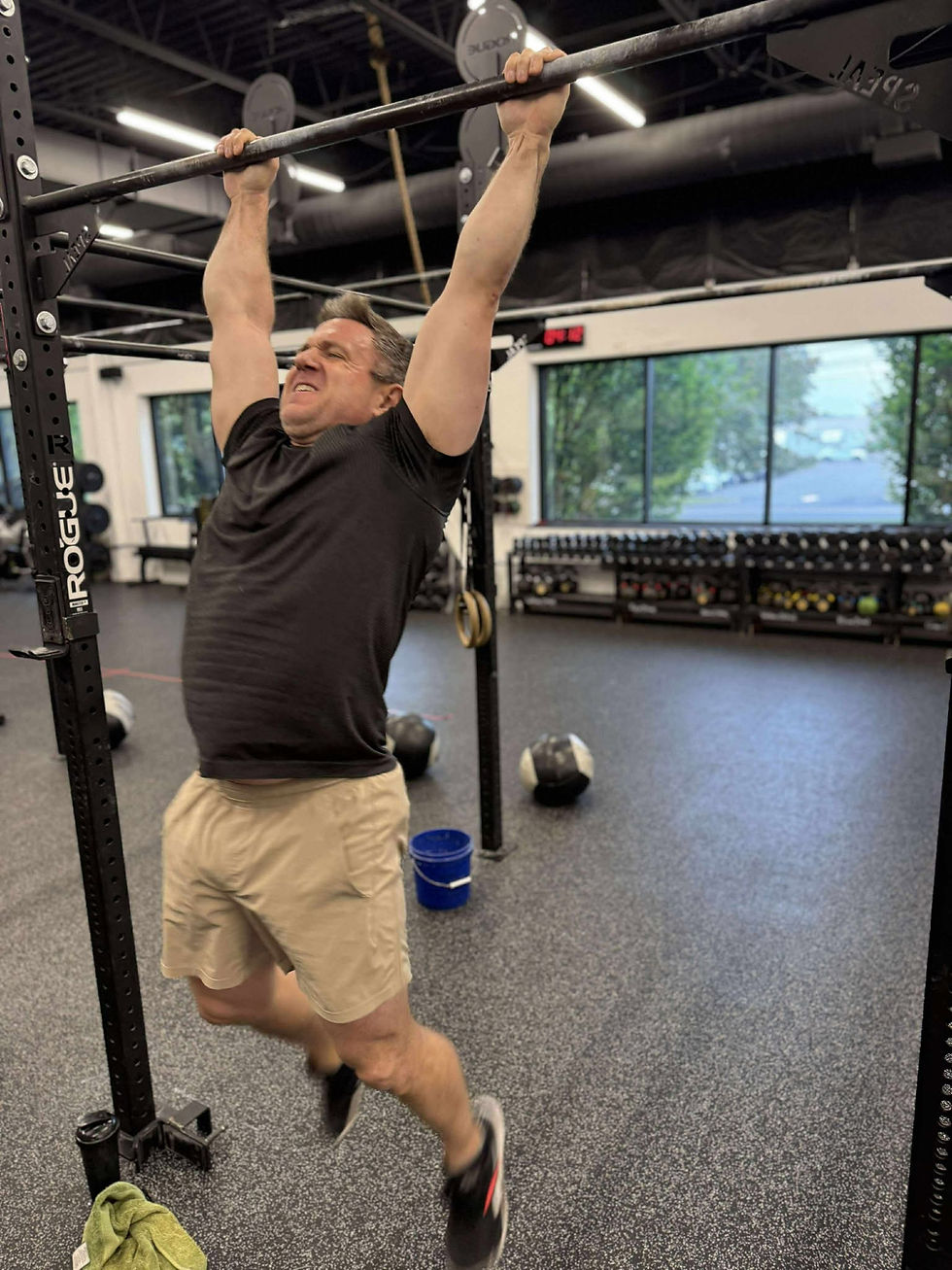The Surprising Truth About Traditional Tools for Tracking Body Composition
- CF201
- Jun 17
- 4 min read
Updated: Jul 11
In our tech-driven world, it's easy to be captivated by the newest gadgets that promise to give you every detail about your body composition. However, the reality is that traditional tools, like the scale, tape measure, and mirror, can sometimes offer even more reliable insights about our health. At CrossFit 201, we believe these timeless tools provide critical information that no flashy device can match. Let’s dive into why these simple tools might be the best choice for monitoring body composition.
The Scale: More Than Just a Number
Most people know the scale as a device that gives them a weight reading. But when used correctly, the scale can provide more than just a singular number.
Tracking your overall weight trends over time can enhance your self-awareness and accountability. For example, studies show that people who regularly monitor their weight are more likely to maintain weight loss and avoid regaining it. Instead of fixating on daily weight changes, aim to assess your weight on a weekly or monthly basis. This approach is beneficial because it captures long-term trends while minimizing the impact of factors like water retention or muscle gain.
Remember that scales can differ in readings based on various factors, such as hydration levels or menstrual cycles. Understanding these fluctuations is crucial. Celebrating progress isn’t just about the number on the scale; it’s also about recognizing the context behind that number.
Measuring Up: The Tape Measure
While the scale focuses on weight, the tape measure provides a broader understanding of body composition by quantifying changes in body size and shape. Measurements of key areas like the waist and hips are particularly important.
For instance, research indicates that a waist circumference greater than 40 inches for men and 35 inches for women is linked to increased health risks, including diabetes and heart disease. By measuring various body parts, such as arms and thighs, you can gauge fat loss and muscle gain even if your weight doesn't change.
Tape measures are cost-effective and portable, making them a practical addition to any health routine. Unlike expensive body composition scales, a simple tape measure can deliver insightful data without breaking the bank.
Reflecting on Change: The Mirror
The mirror is often an overlooked yet powerful tool in tracking body composition. Unlike numerical data, the mirror visually reveals changes in muscle tone, posture, and overall appearance.
Your perception of your body can significantly impact your self-esteem and motivation. When you look in the mirror and notice improved definition or a healthier posture, this visual feedback can boost your confidence. Studies show that positive body image is linked to sustained motivation and healthier lifestyle choices.
Moreover, visual progress can sometimes be more fulfilling than numerical changes. If you feel like you've become stronger or leaner, this subjective assessment can inspire you to maintain healthy habits without letting a number dictate how you feel.
Cost-Effectiveness: The Practical Choice
When you consider the affordability of the scale, tape measure, and mirror, their superiority becomes clear. High-tech devices can cost hundreds of dollars, with added subscription fees for tracking services. In contrast, the cost of a basic scale or tape measure is minimal, usually under $20.
Additionally, these traditional tools require no batteries or complicated setups. Anyone can easily step on a scale or take out a tape measure without needing tech training. This accessibility makes them suitable for everyone, regardless of age or fitness level.
A Holistic Approach to Body Composition
To effectively monitor body composition, it's essential to take a holistic view. Focusing solely on numbers from modern devices can lead to unhealthy obsessions with weight and appearance.
By combining the information from the scale, tape measure, and mirror, you can achieve a well-rounded understanding of your body. This integrated approach helps monitor physical changes while promoting a healthy body image. For instance, if a scale shows no change but your tape measure indicates a smaller waist, you may feel encouraged and motivated.
While technology can certainly provide useful data points, remaining attuned to your body's changes and reactions offers a more fulfilling health journey.
Understanding Limitations
It's essential to recognize the limitations of each tool. The scale can promote a narrow focus on weight as an indicator of health, while tape measures might miss nuances in fat distribution. Mirrors can sometimes distort our perception of reality.
The key is not to allow any single tool to dominate your understanding of body composition. Using them in conjunction with one another enables you to gain a fuller perspective on your health journey.
Wrapping Up
In a time when advanced technology offers extravagant features, traditional tools like the scale, tape measure, and mirror deliver enduring, practical insights into body composition. Their ease of use, affordability, and ability to provide a comprehensive view make them vital resources for anyone looking to improve their health and fitness.
Utilizing these tools encourages a balanced perspective on body image and self-perception. By integrating the scale, tape measure, and mirror into your routine, you pave the way for a more meaningful understanding of body composition. These simple methods can lead to improved health outcomes while steering clear of the overwhelm that can come with tech-heavy solutions.

By adopting a blended approach with these traditional tools, you can establish a clearer and more sustainable path toward understanding your body composition. These methods, when combined with a healthy lifestyle, can lead to better well-being and a positive relationship with your body.



